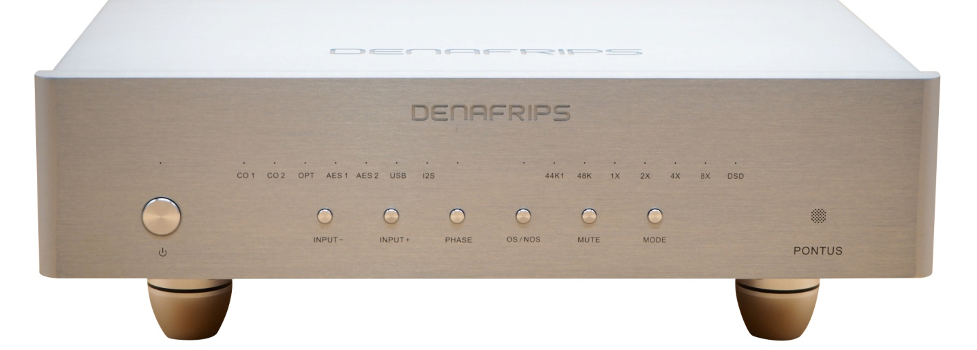
Have you heard the chatter about a relatively new company called Denafrips? They make a full line of DACs that have been getting some very positive reviews in the last year or so. I reached out to them to see about reviewing one of their products.
After spending most of this spring and summer with some excellent analog products, including cartridges from DS Audio (review) and HANA (review), the linear tracking air-bearing turntable from Holbo (review), and a “revolutionary” tonearm from ViV Labs (review), I decided to turn my attention to the digital world. While my heart and my ears belong to analog, I simply cannot deny the ease of use and the vast musical catalog that digital audio offers.
About Denafrips
The Denafrips line is available through Vinshine Audio, which is owned by Alvin Chee and is based in Singapore. Alvin quickly contacted me and he proposed that I take a listen to their Pontus DAC. This is the first of two posts on this DAC. Here, I’m diving into the technical side of things. In the next post, I’ll tell you how it sounds.
This DAC, which is also known as The Goldilocks DAC, resides near the middle of their product line. The Vinshine website lists the products in Singapore dollars. I’m listing them in American dollars for the benefit of most of our readers. The Pontus comes in at approximately $1,700. Below it is the smaller Aries II at approximately $770.00. The Venus II is $2,975, the Terminator is $4,470.00, and the new Terminator Plus tops out at $6,475.00. All prices include shipping.
About the Name
Where does that Denafrips name come from? Well, it’s the first letter of each of the following words…
Dynamic
Exquisite
Natural
Attractive
Fidelity
Refined
Intoxicating
Pure
Sophisticated
THAT’s a pretty bold agenda. Let’s see if they can pull it off.
Behind the Design
The Denafrips line uses the R-2-R or Ladder DAC design. This is one of the key features that drew me to the entire Denafrips line. It’s also one of the main reasons I wanted to invest the time to review one. In my earlier review of the Border Patrol SE-I DAC, I wrote a good bit about my personal preference for Ladder DACs and my digital history. You can check that review out here.
Initial Impressions
About 3 weeks after my initial contact with Alvin, the Pontus DAC arrived at my door in perfect condition. They ship their units directly from Singapore in packing that is designed to withstand virtually any impact the shipping Gods can throw at it. You can be comfortable your unit will arrive safely.
Unboxing the unit revealed a beautifully executed component. The casing is milled from solid aluminum, and the size belies its 19 lb. weight.
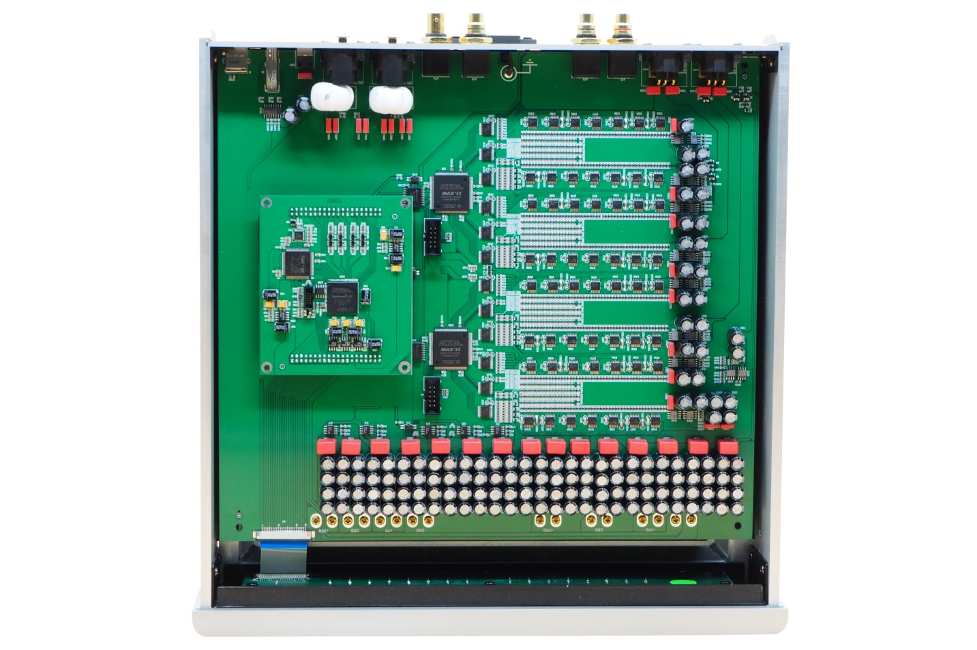
When I removed the top of the unit, I could see the high-quality manufacturing for the mainboard and the DSP board. In fact, the execution of the circuitry is something I would expect to see in a unit that costs many times the price of the Pontus, but that is only half the story.
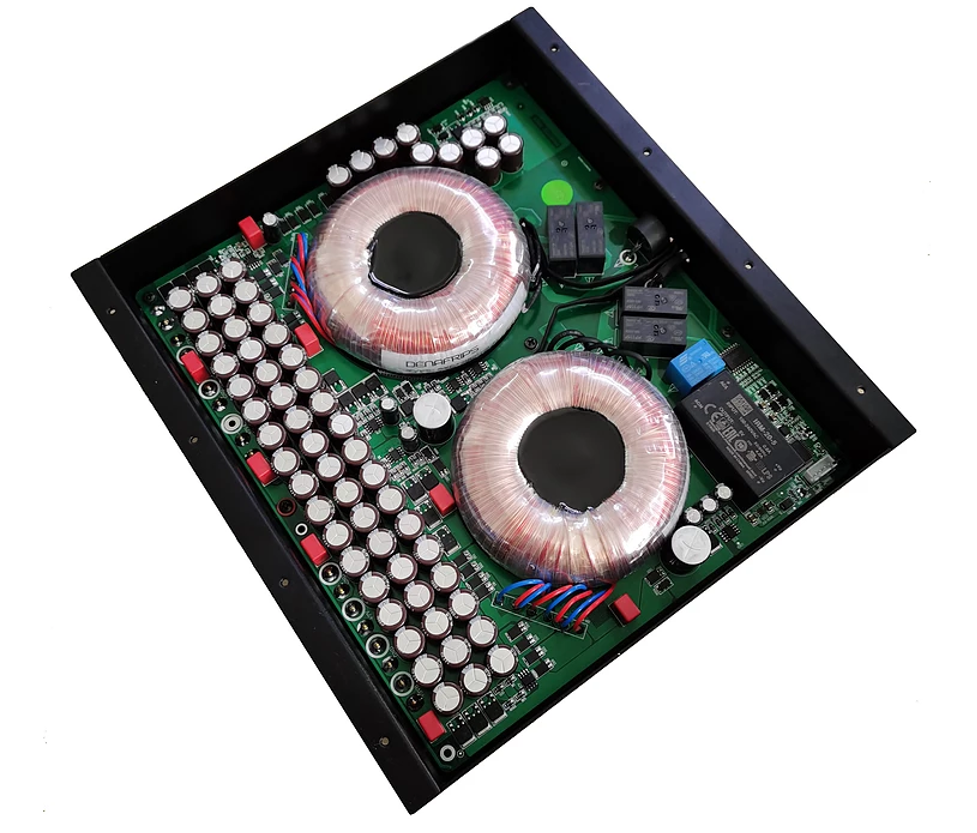
The other half is the power supply that resides underneath the mainboard in a multilevel design. Denafrips marketing materials describe the power supply as “encapsulated in a thick metal alloy, equipped with dual o-core transformers, completely isolated super linear regulator, multistage power supply for digital and analogue sections, ensuring low noise, high availability power supply to the DAC.”
What’s Up Front
From the picture at the top of this post, you can see the functional and elegant front panel. The seven buttons (from left to right) include the power standby, INPUT-, INPUT+, PHASE, OS/NOS, MUTE, and MODE (iS2 mode only). The LEDs above the buttons indicate the state the button is in and the input sampling rate of the music. The illumination level of the LEDs is quite discrete and it was never bothersome from my listening position. Thank you, Denafrips!
Rear Panel View

On the rear panel, you will find balanced and unbalanced analog outputs, two coax inputs (BNC and S/PDIF), two AES inputs, an optical input, a configurable i2S input, and, of course, a USB input. The power cord’s IEC input is in the middle of the rear panel, which is the position I prefer.
I did have one ergonomic issue when I tried to disconnect the right channel’s balanced output. The overhang of the cover made it a bit difficult to get to the balanced connector’s release tab. My stump-like fingers probably exaggerated the problem. Also, as a reviewer, I felt a need to try different cables. An end-user would simply hook up his/her cables and not look back. None the less, I have noted this issue for any of you who are also cursed with stump-like fingers.
Some Technical Fine Points
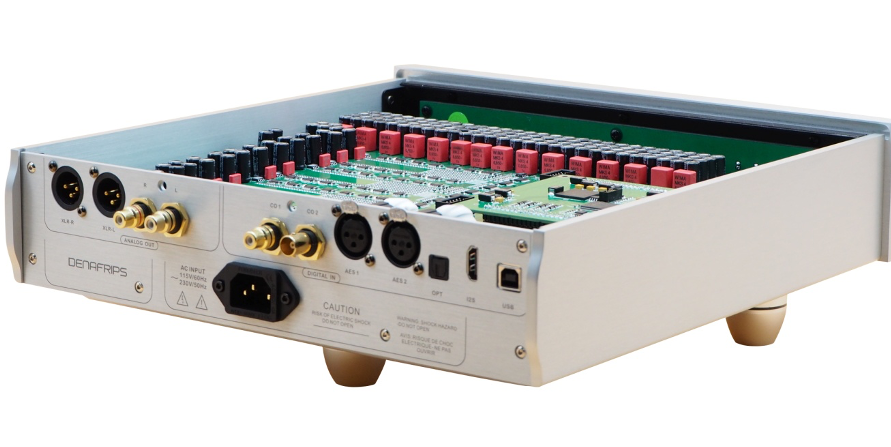
For those of you who search out this information, the Denafrips website has a good bit of technical detail on it. As a nod to the “tech heads” out there, here are some of the main design points.
Adaptive FIFO Memory Cache Architecture
Denafrips uses Adaptive FIFO technology to transfer the audio data input to the high-speed RAM buffer. Using the high-stability active crystal clock signals generated from within, it extracts the audio data from the high-speed RAM and converts this data to the I2S protocol. It then transmits I2S data to the R2R DAC for DA conversion.
This FIFO is literally jitter-free. It eliminates the possible jitter caused by the upstream source, cable, or the digital receiver chip in the DAC. Let’s put it this way, the number of jitter in Pontus DAC can only be caused by the quality of FIFO active crystal. Pontus’ crystals Japanese NDK made and powered by an LDO regulator. The jitter is so small that you can ignore it.
A Proprietary State-of-the-Art USB Interface
The DENAFRIPS DAC uses the proprietary USB Audio Solution, powered by STM32F446 Advanced AMR Based MCU. DENAFRIPS redesigned and optimized circuitry so that the DAC can be used with computers/streamers. It supports a 24bit/1536kHz PCM data stream and native decoding of DSD up to DSD1024. It comes with a licensed THESYCON USB Driver for Windows Platform.
Note: The USB Module triggers only when you select the USB Input. This design is intended to reduce digital input interfaces cross-interference for best sound reproduction.
Proprietary SPDIF Digital Audio Receiver
The SPDIF Coaxial, Optical, AES/EBU input supports up to 24bit/192kHz digital audio format. The TERMINATOR-PLUS abandons the use of a Digital Audio Receiver chip. The on-board Field Programmable Gate Array (FPGA) decodes the digital data and shortens the signal path to eliminate any undesirable coloration.
Proprietary R-2R and DSD Decoding Architecture
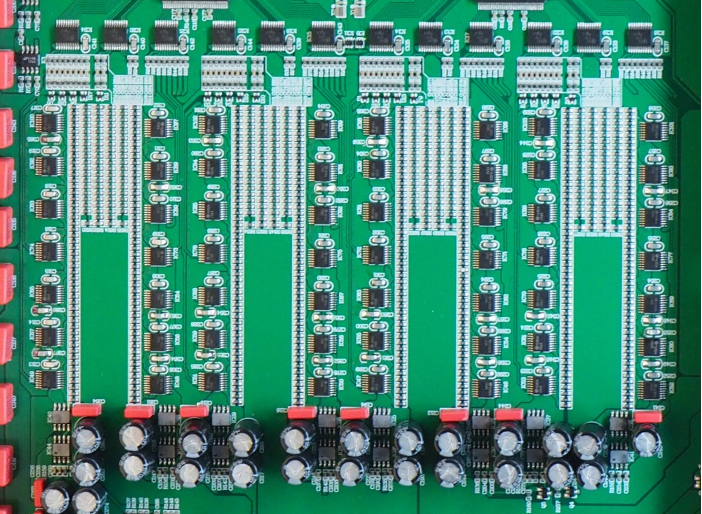
The Pontus has a 24Bit R-2R DAC to decode the PCM data stream and a 32-steps FIR analog filters hardware decoder to decode the DSD data stream. This design guarantees that both the PCM format and the DSD format can be perfectly decoded at the same time. According to Alvin Chee, “It is rare in the current market that an R-2R DAC can hardware decode both PCM and DSD formats.”
One other note, Alvin tells me the Pontus I have is the most recent version that incorporates all of the latest running production upgrades they have made since the inception of the Pontus. He describes the upgrades as significant, but they have resisted calling it a Pontus II.
The main upgrades have been:
1. Beefed up power supply
2. Germany Film Caps WIMA
3. Upgraded DSP board The latest DSP board is available to early adopters for approx $225 US and is user installable. (All new Pontus are shipped with the DSP board upgraded)
OK, all that tech stuff is interesting, but I am a “hook it up and listen to it” guy. So, watch for Part 2 of this review where I promise, I’ll talk about the sound.

